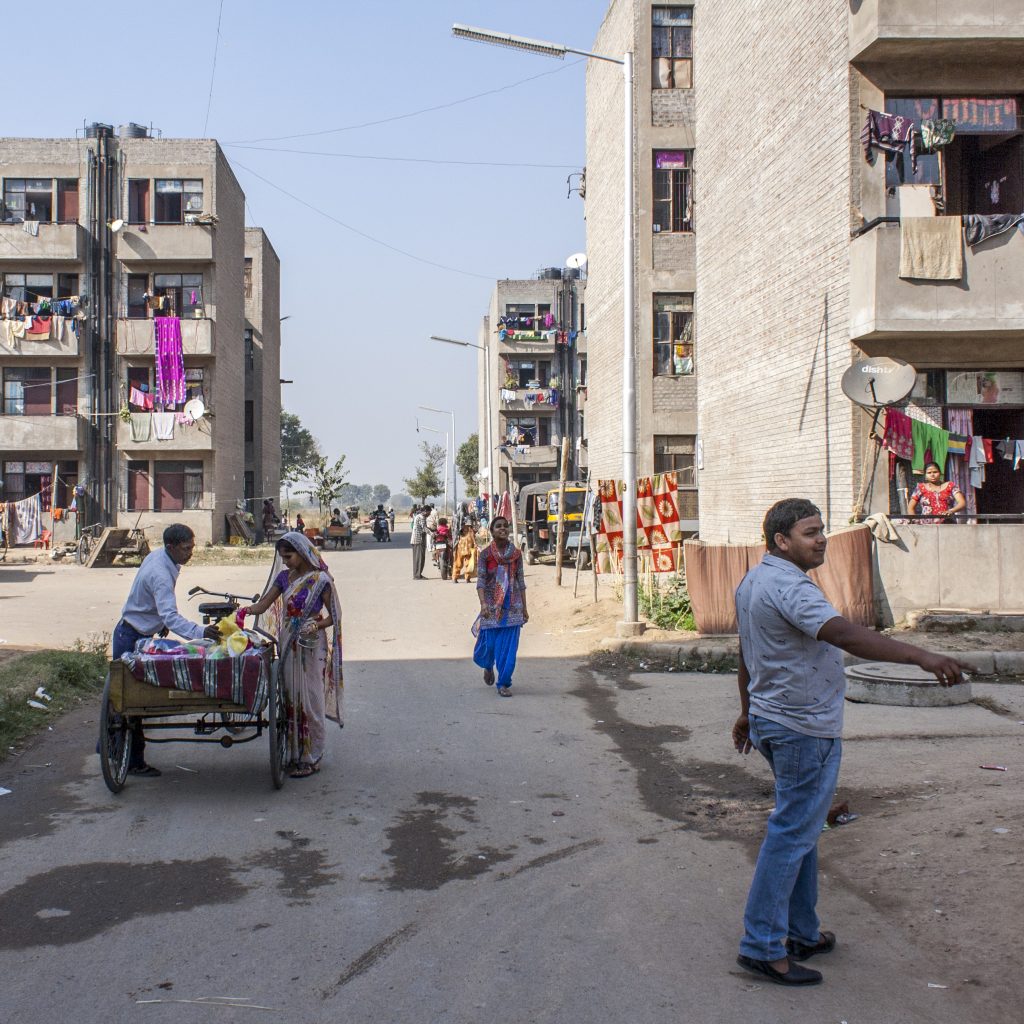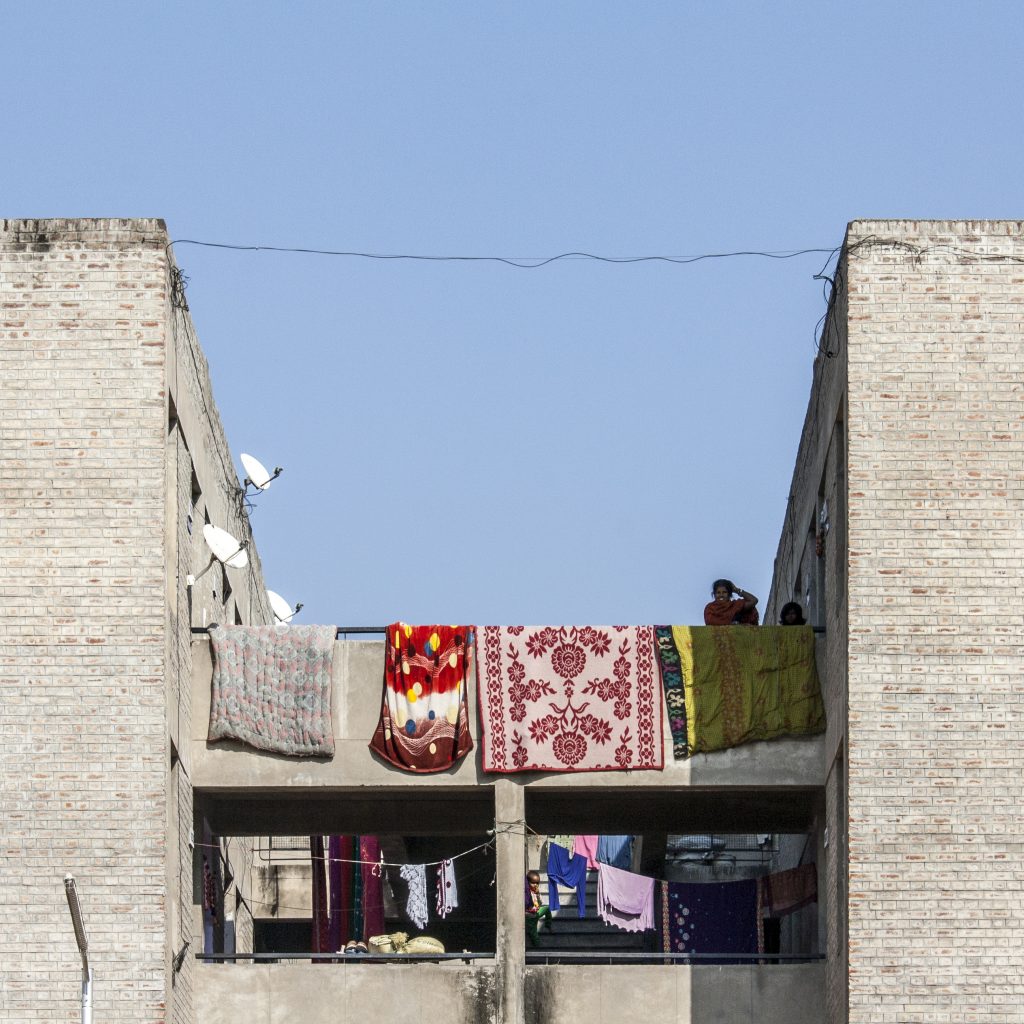Chandigarh Research Studio
Graduate study abroad programme in Chandigarh, India, 2017
Organizers + instructors: Roy Cloutier, Nicole Sylvia (UBC SALA)

The Chandigarh Research Studio is a semester-long, graduate-level study abroad program from the University of British Columbia’s School of Architecture and Landscape Architecture. It brought eleven UBC graduate architecture and landscape architecture students to the diverse and rapidly-changing landscapes of Northern India, specifically the city of Chandigarh. In collaboration with local architecture and urbanism experts from the Chandigarh College of Architecture, we developed three courses—a design research studio, a field-drawing/urban ethnography class, and a history/theory class—to introduce students to contemporary urban dynamics in India.
Most Western architectural history books leave off their discussion of Chandigarh with Le Corbusier’s master plan from the early 1950s—occasionally including some editorialized comments regarding the perils of planning a city from scratch. Revisiting the plan seventy years later, however, reveals a more complex and far more interesting reality. In the intervening time, the sector-and-superblock plan of the city has been in equal measures challenged, adapted, extended, subverted, and embraced by its planners and denizens alike. Today, in the face of mass urbanization—Chandigarh’s population is expected to more than double in the coming decade, exceeding the initial plan by an order of magnitude—the limits of planning and the challenging joys of adaptation are on full display.
This situation formed the backdrop for the three courses that comprise the program. These courses were in turn supplemented in a number of ways: excursions led by local NGOs to rapidly-urbanizing villages in Punjab; collaborations with local sociologists and researchers studying informal settlement; day trips to key historical and contemporary buildings in Amritsar and Anandpur Sahib led by students from Chandigarh College of Architecture; a week-long trip through Northern India covering historical and contemporary sites in Delhi, Agra, Fatehpur Sikri, Jaipur, Udaipur, and Ahmedabad; and dinners and excursions in the city with our host families.
Check out the course Instagram page for photos and more.
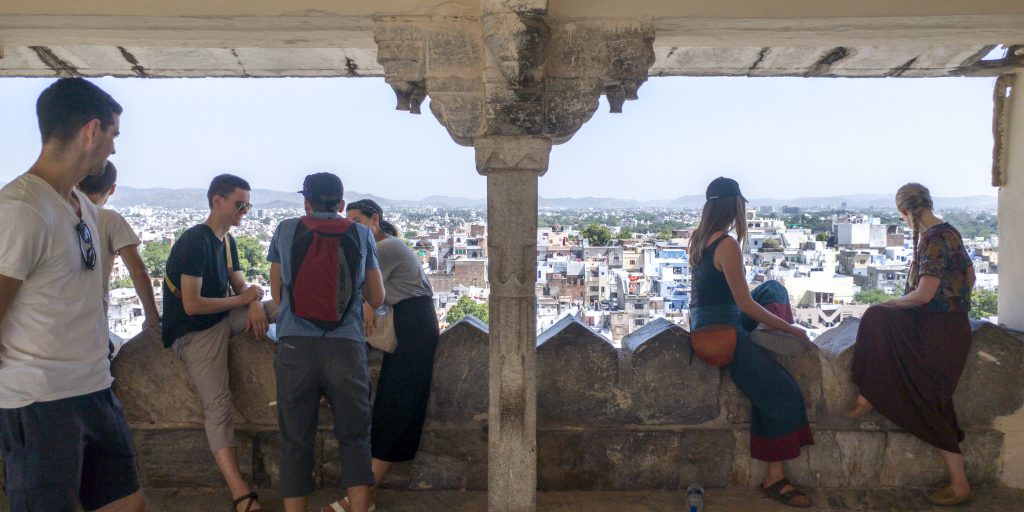
01 _ Dwelling In / On The Periphery
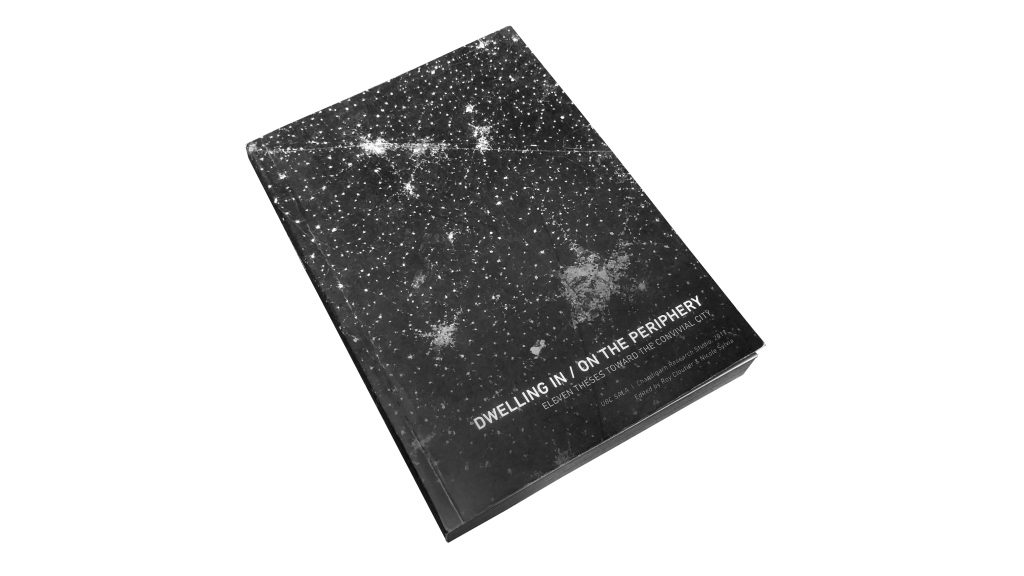
‘Dwelling In / On The Periphery’, the core design studio for the program, was based on two forms of research: one academic, examining contemporary scholarship on urbanization; and one deeply rooted in the histories and cultures of a particular place—in this case, the historically-charged and urbanistically-complex context of Chandigarh. The studio examined contemporary urban dynamics in India, particularly as precipitated by the Modi government’s Smart Cities program. It asked students to question the dominant urban and architectural models adopted by Smart Cities advocates, examining them through dual lenses: on one hand, critical geography, on the other, architectural process, representation, and speculation. In turn, students produced research projects that remade these forms of urbanism from the inside out—accepting the concerns of the Smart City while questioning, pluralizing, and transforming the processes by which it takes form and evolves over time. The studio was ultimately both analytic and synthetic—working toward speculative proposals of alternative forms for the Smart City.
Engaging the periphery of Chandigarh’s Corbusian plan as a found context, the studio questioned and selectively extrapolated the logics of the city to an urban-scale site currently targeted for Smart Cities development. The students’ projects worked both upward from the scale of a unit (of dwelling, of material assembly, of mutualistic exchange, of social collectivity, etc.) and downward from the scale of an urban arrangement, converging toward interventions that are both systematic and architectural.
A book of the students’ research and projects is available at this link.

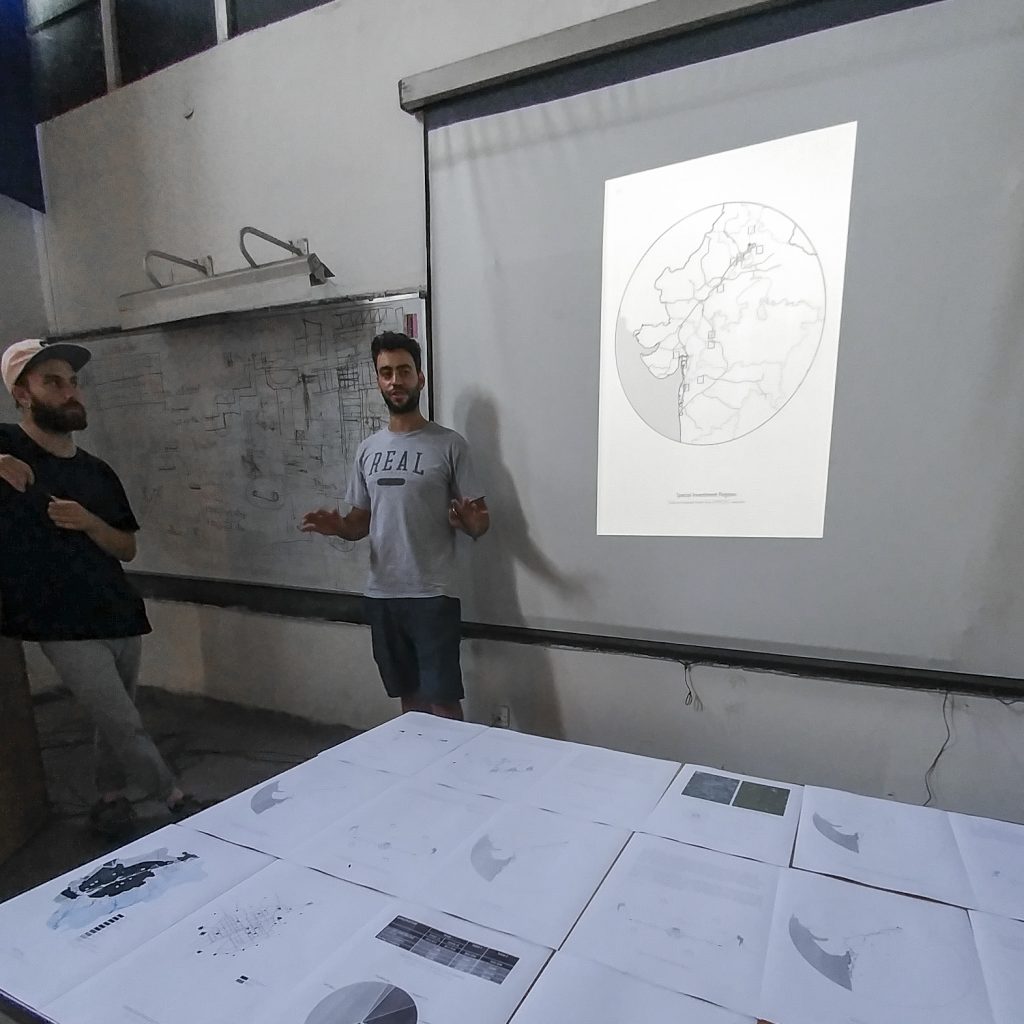
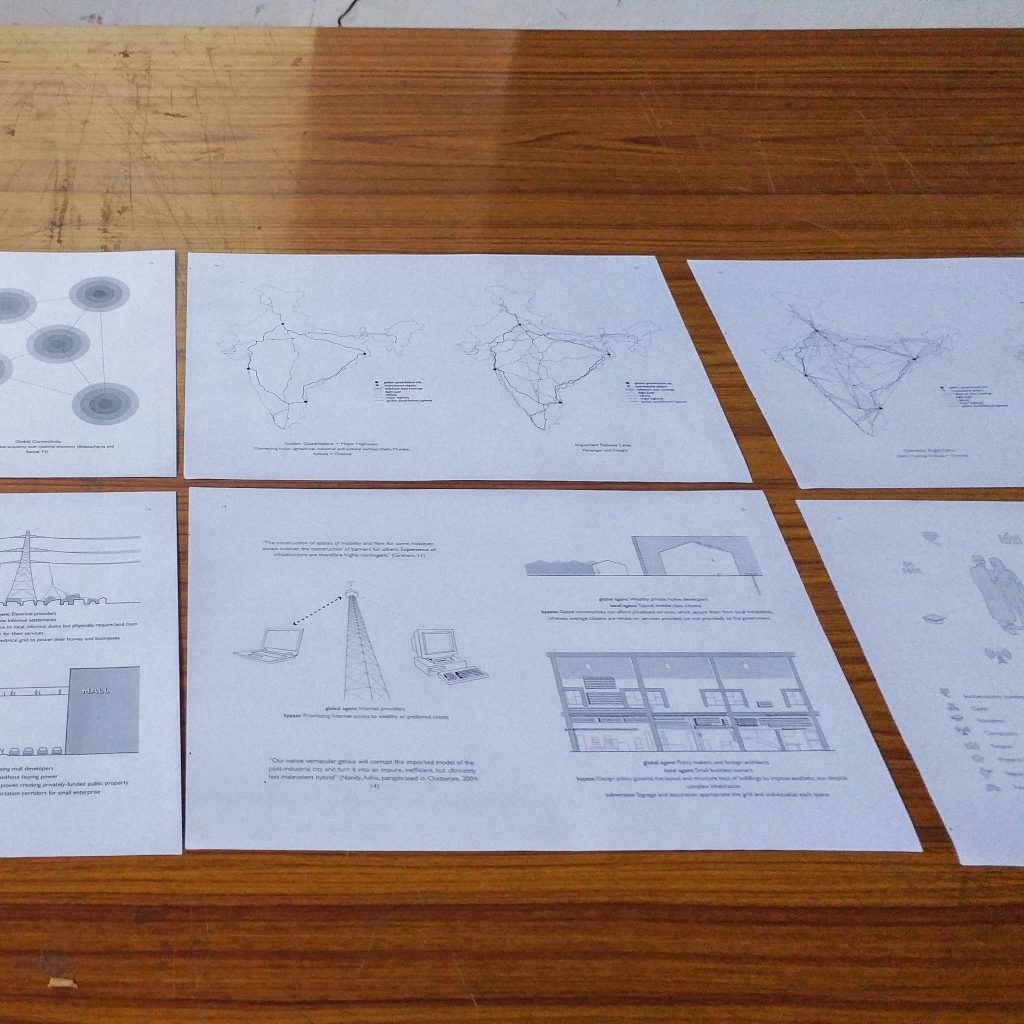

02 _ Grid, Zone, and Field Studies
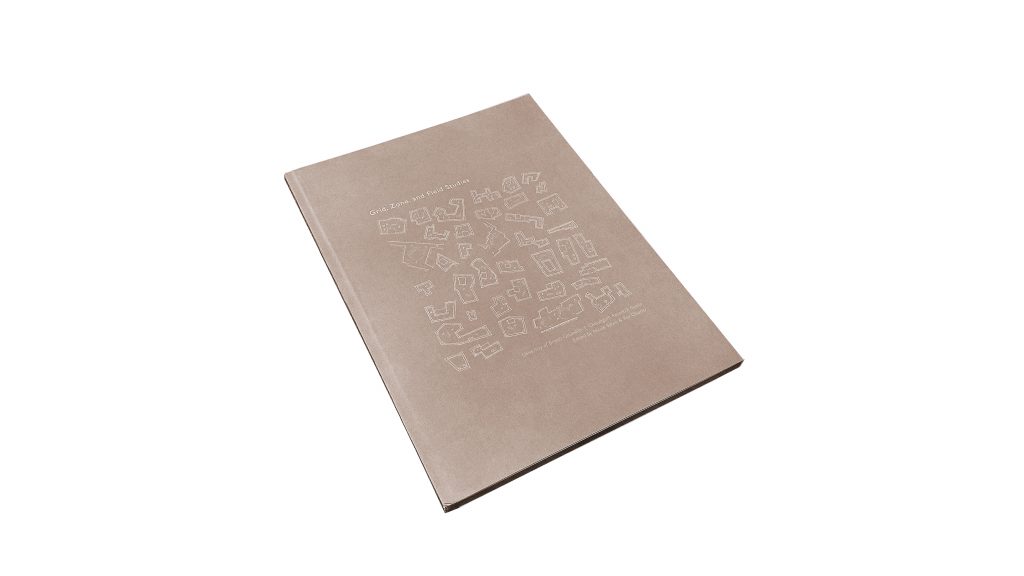
“Grid, Zone, and Field Studies” collects the work from a drawing-based field research seminar that brought students out into the diverse landscapes of Chandigarh, its periphery, and its hinterland. Part ethnography, part experimentation, the aim of this course was to give students a chance to immerse themslves in the quotidian circumstances of Chandigarh and its surroundings, studying and reflecting on them through the medium of the line drawing.
The course began with a study of heterodox graphical precedents and notational conventions from beyond the canon as a way of priming students to think critically about how to represent time, change, and activity. Following this, a series of ‘field walks’ — loose, experimental drawing exercises in a series of sites around Chandigarh and nearby villages — provided a foundation for later research into a specific observed condition selected by each student.
Students were then asked to create a folio of narrative drawings based on their observations, drawing out stories and patterns encountered and observed in the course of the program. In these drawings, the focus shifts from architecture as traditionally understood toward a more open-ended examination of everyday life and the spatial conditions that support it.
The research pamphlet is available at this link.

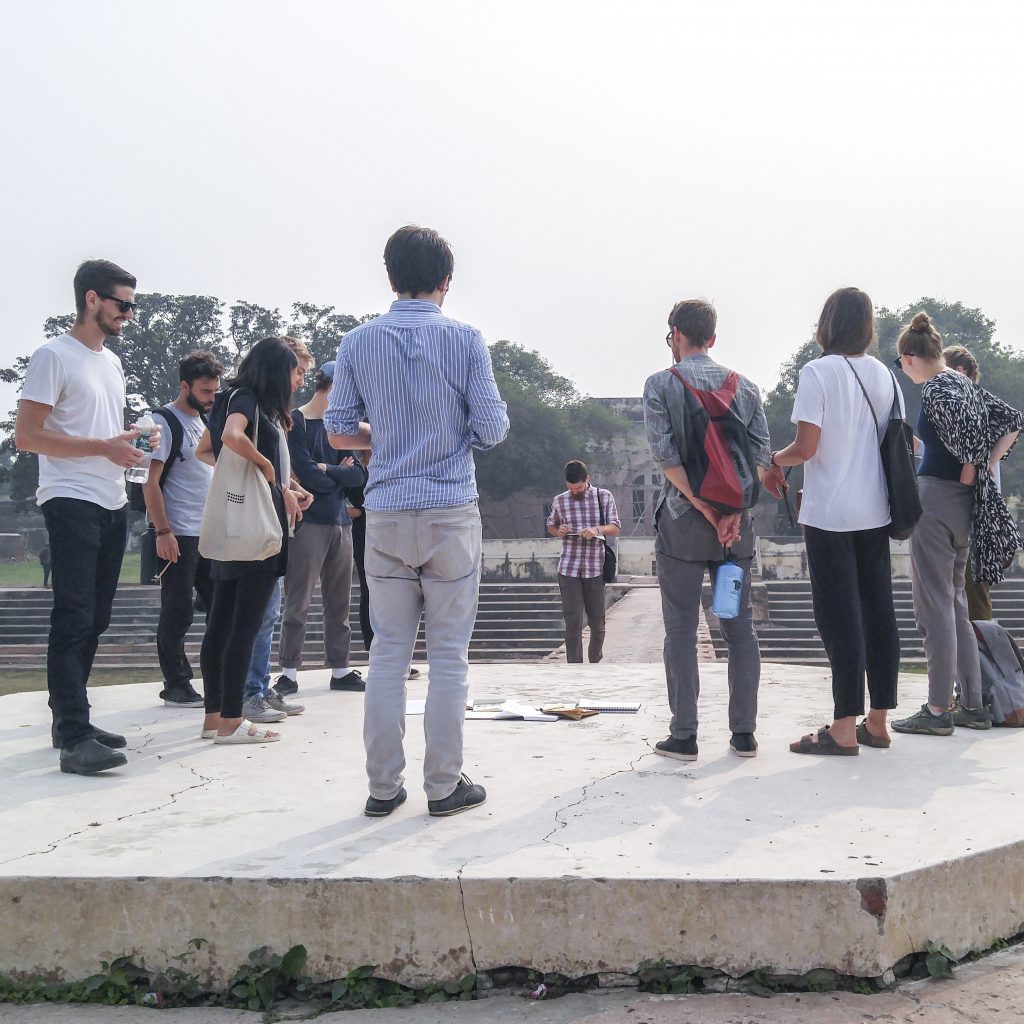
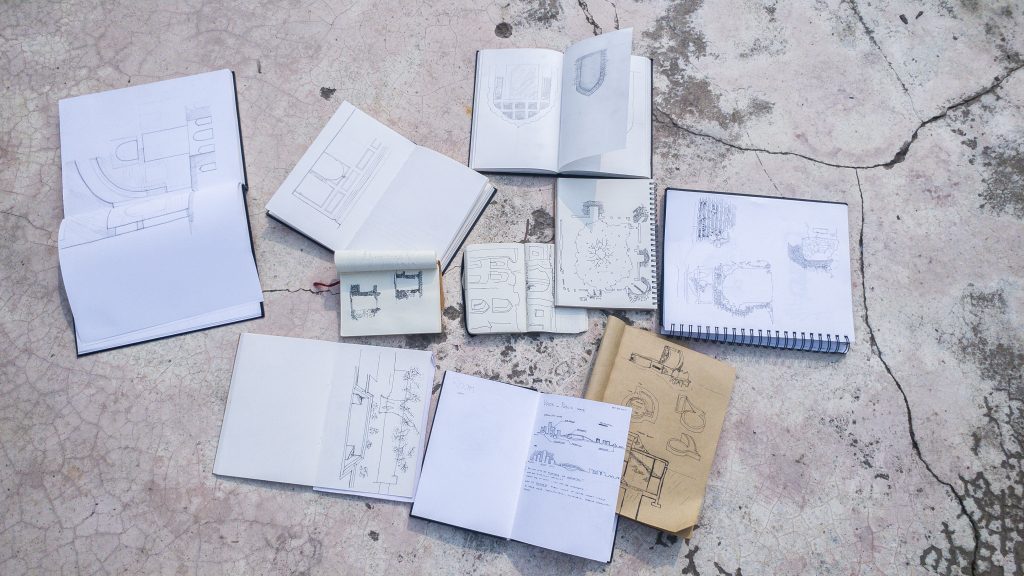


03 _ Collective Placemaking in Dhanas

“Activating Open Space: Collective Placemaking in Dhanas” was assembled as part of a history/theory seminar on incremental housing and collective agency. The course placed at its core an interdisciplinary, social-science and historically-based method that emphasized the lives of projects over time and the agency and desires of their inhabitants. To this end, the course was co-taught with two Chandigarh-based researchers: Dr. Bindu Duggal, a sociologist, and J.P. Singh, an architect and professor specializing in the history of informal settlements.
The course focused on Dhanas, a mass-housing project on the periphery of Chandigarh that the Chandigarh Housing Board is using to relocate and rehouse 40,000 former informal-settlement-dwellers. Following a research phase in which we shadowed Dr. Duggal in her interviews with residents of Dhanas, the students created a pamphlet of tactical interventions developed through interviews with residents and local experts. The proposals focused on small, easily-built interventions into the checkerboard of courtyards in Dhanas, proposing ways that the Chandigarh Housing Board might change its rules to allow residents to claim and transform these currently-underused spaces.
With roughly 17 million people expected to move to cities in India every year over the next fifteen-plus years, the paired questions of informality and mass housing will only grow—and with them, the need for new approaches to design and understandings of agency.
The research pamphlet is available at this link.
